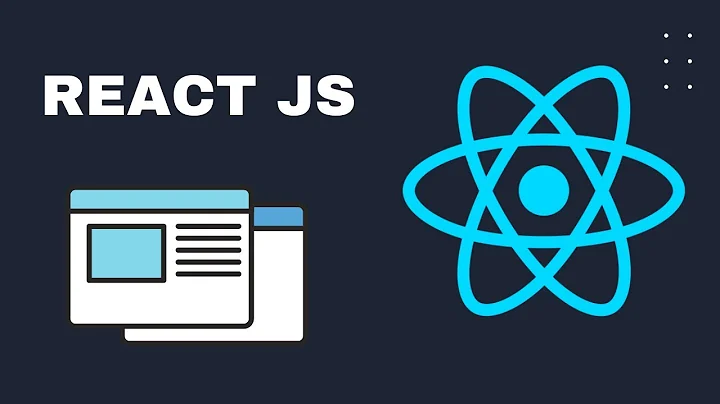Conditionally setting html attributes in React.js
checked/defaultChecked take booleans, not strings.
<input className="__input"
type="radio"
name={self.props.radioset.name}
value={radio.value}
defaultChecked={radio.checked} />
Side note: avoid defaultChecked/defaultValue and use checked/value with onChange instead.
Related videos on Youtube
Comments
-
Adam Bickford over 1 year
I'm having a surprisingly hard time setting a default option for a radio button component in React.
Here is my
RadioTogglecomponent:/** @jsx React.DOM */ var RadioToggle = React.createClass({ render: function () { var self = this; return ( <div className="RadioToggle"> {this.props.radioset.radios.map(function(radio, i){ return ( <label className="__option" key={i}> <h3 className="__header">{radio.label}</h3> {radio.checked ? <input className="__input" type="radio" name={self.props.radioset.name} value={radio.value} defaultChecked /> : <input className="__input" type="radio" name={self.props.radioset.name} value={radio.value} /> } <span className="__label"></span> </label> ) }) } </div> ); } }); module.exports = RadioToggle;And here is how I'm creating the component:
<RadioToggle radioset={ { name: "permission_level", radios: [ { label: "Parent", value: 1, checked: false }, { label: "Child", value: 0, checked: true } ]} }/>The above code works, but we don't like generating almost identical code depending on the
radio.checkedoption.The way the component is set up, I pass it a name and an array of radios to create, and for each object in the radios array use that data to create a radio button.
In other cases I've been able to conditionally set attributes by putting ternary statements as the value, like below, but that doesn't work here.
The problem with
defaultChecked={radio.checked ? "checked" : ""}is that even with the output becomingchecked="checked"on one radio button andcheckedon the other, it makes both radio buttons checked by default, resulting in the last one actually being checked.Again, the component above works, but I'm hoping someone with some more experience with React will have a cleaner way of doing it rather than generating almost identical elements except for that attribute.
-
Ross Allen over 9 yearsYou can pass a context to
mapas the second argument rather than usevar self = this.this.props.radioset.radios.map(..., this);.
-
-
Adam Bickford over 9 yearsYour bin threw an error for me but I did have the checked prop a boolean (edit: nvm I see the example you were referencing).
checkedby itself in html without any value, or evenchecked=false, still marks the element as the default, so I was operating under the assumption that it was the same in React. I could've sworn that I tried your suggestion but you are right,defaultChecked=falsein React doesn't output the lonecheckedattribute orchecked=falseso this will work just fine. Would you mind elaborating on your side note though? How you would use onChange to mark a default? -
 Brigand over 9 yearsYou keep the data about which is checked in state, and update that when the user changes it, which causes the UI to update, and everything works as expected. However you can additionally render other things depending on that state, e.g. an extra form field when a certain value is selected, or you can send the data elsewhere e.g. in an ajax post request to the server when a button is clicked.
Brigand over 9 yearsYou keep the data about which is checked in state, and update that when the user changes it, which causes the UI to update, and everything works as expected. However you can additionally render other things depending on that state, e.g. an extra form field when a certain value is selected, or you can send the data elsewhere e.g. in an ajax post request to the server when a button is clicked. -
 Alexander Suraphel about 9 yearsWhy avoid defaultChecked/defaultValue?
Alexander Suraphel about 9 yearsWhy avoid defaultChecked/defaultValue? -
 Brigand about 9 yearsIt's less clear, and you often end up either directly modifying the dom, or rewriting it to use value/onChange. It also lets there be no difference between
Brigand about 9 yearsIt's less clear, and you often end up either directly modifying the dom, or rewriting it to use value/onChange. It also lets there be no difference between<input>and<MyCustomInput>components, api wise. It's better to do it right from the start, and consistently. -
Jacob almost 9 yearsthis page describes the React approach: facebook.github.io/react/docs/forms.html
-
Taysky almost 9 years@FakeRailBrigand When I open up the jsbin demo and click on the buttons they don't change values from true to false, it remains on the initial state no matter what I click. If I change "checked" to "defaultChecked" the radio buttons will respond to my clicks.
-
Con Antonakos about 8 yearsI had an issue with
defaultCheckedandonClickfortype='checkbox'. Usingcheckedprop worked.










